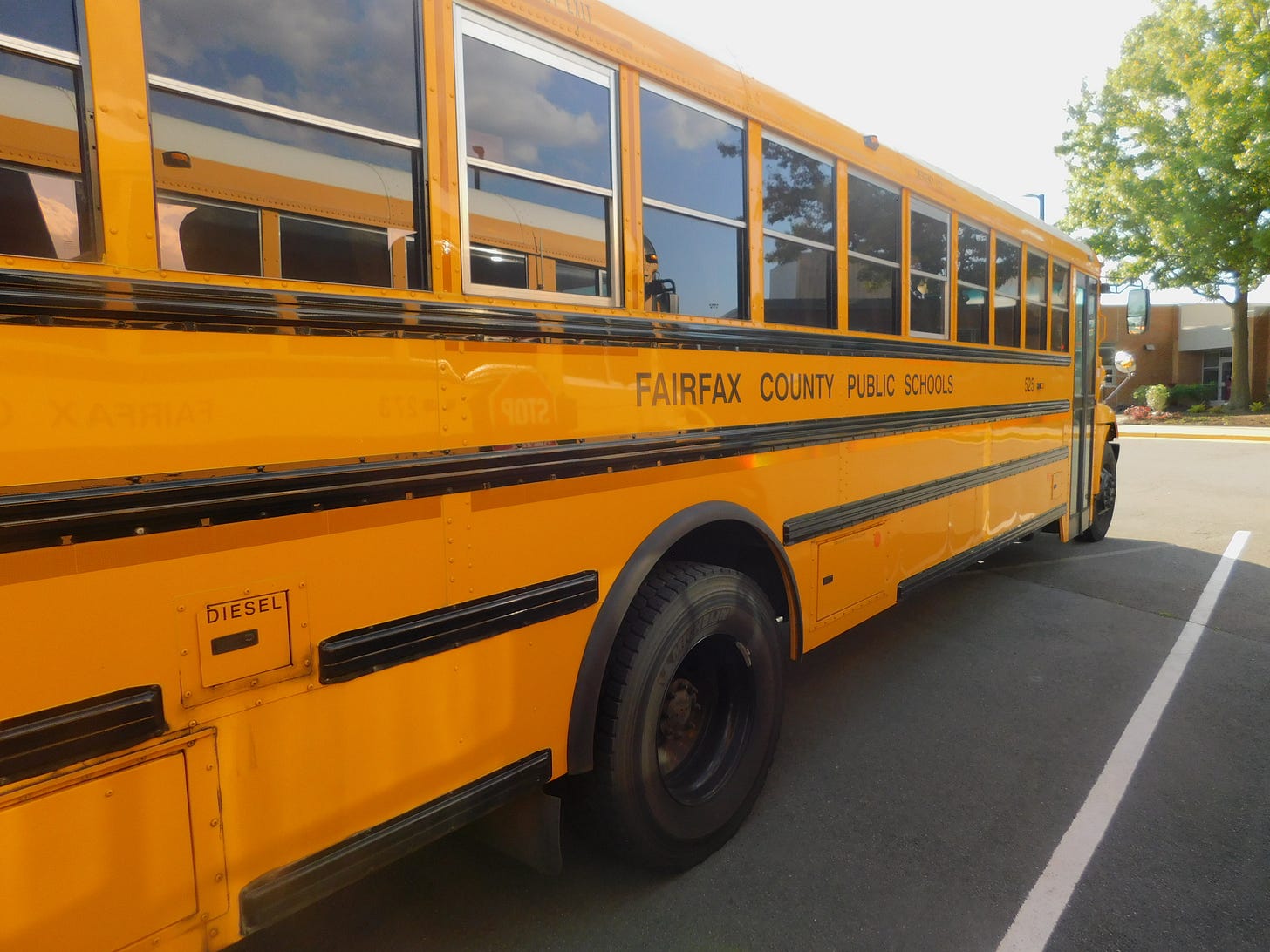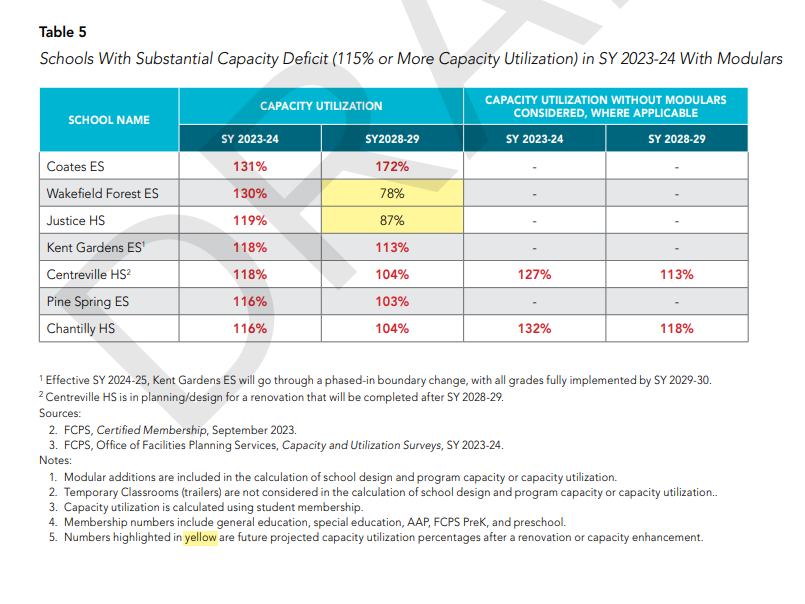Fairfax County’s big change on school boundaries, explained
Fairfax County Public Schools will carry out a comprehensive review of school boundaries every five years, according to a measure the school board passed last week after years of discussions.
The change comes as Fairfax confronts overcrowded and under-capacity schools across grade levels, and it followed strong opposition from some parental groups, who expressed concerns about potential learning and social disruptions.
School boundaries aren’t changing just yet. But the move tees up the county’s first big-picture boundary assessment in nearly four decades.
Here’s a quick breakdown.
What does the new policy do?
The school board’s vote updates FCPS’s Policy 8130, which governs school boundary changes and closings. The old version gave the superintendent broader authority to redraw school boundaries, Braddock District Representative Rachna Sizemore Heizer said, but it didn’t require county-wide reviews, nor reviews on any regular timeline.
That meant that FCPS adjusted boundaries on a case-by-case basis, without examining how all the pieces fit together in one of the nation’s largest school districts. A comprehensive review last took place in Fairfax in 1986.
“We review boundaries every year, but it’s kind of up to the school board members to advocate, and there’s no real consistency to looking holistically at the county and do what’s best for the county,” said Sizemore Heizer, who previously chaired the school board in 2022-23. “That doesn’t mean there’s going to be major changes or even any changes every five years. It’s just to put the process in to make sure we’re looking holistically every five years.”
That type of cycle for boundary reviews isn’t unusual. Arlington County requires a “systematic review of boundaries” every five years at minimum; it’s in the process of revising that down to every two.
What led to this decision?
In short: burdensome disparities in school occupancy.
Some Fairfax schools, like Chantilly (116% capacity) and Centreville (118%) high schools, remain overcrowded even after adding trailers as extra classrooms. That cramming in of students means inflated class sizes, fields and facilities that “are getting worn out,” and AC units that sometimes “can’t keep up,” Sizemore Heizer said.
Other schools are being underutilized, leaving them unable to host some electives and programs that students want. Future boundary reviews will seek a better balance.
Raising taxes further to fund more renovations and construction was not an option, Sizemore Heizer said. The Board of Supervisors already raised the county’s residential tax rate by 3 cents this past spring. Supervisors approved a funding increase for schools that was well short of the $254 million increase FCPS sought, calling it “too heavy of a burden on our taxpayers.”
How will school boundaries be redrawn?
The new policy requires the school board to approve any comprehensive redistricting plan. Implementation of the new boundaries is up to the superintendent, Michelle C. Reid.
Under the policy, the superintendent must consider a few primary criteria when FCPS reviews boundaries going forward:
Access to programming
Enrollment and capacity
Proximity
Transportation
The update also specifies several second-tier criteria, according to an FCPS presentation, that “may” be considered in reviews. Those include keeping students in their same school pyramid, limiting disruption and promoting stability, and minimizing costs.
Will families have a say in the process?
They certainly will, though it’s not absolute.
The new policy mandates hearings, outreach, in-person and virtual meetings, and surveys throughout the review process. The school board passed a motion directing the superintendent to establish an “advisory committee” of community members to provide feedback.
“We really clarified the amount of public engagement before, during, after these boundary changes to make sure that the public’s voice would be heard and that they are well aware of what is happening before it happens,” Sizemore Heizer said.
The updated policy does limit individual exceptions to redrawn boundaries and emphasizes “consistency of phasing, when possible,” according to the FCPS presentation. Two school board members’ motions failed that would have given currently enrolled middle and high school students the option of staying at their school or attending the new one.
How might boundary changes affect students?
Shifting school boundaries can disrupt students and their families, a top concern that volunteer groups have voiced in recent weeks and months. (One local group, the Fairfax County Parents’ Association, did not respond to a request for comment.) It will be up to FCPS leaders to limit disruptions, and they say that’s a priority.
Sizemore Heizer said she sees clear benefits to redistricting for students’ health. Some students at overcrowded schools, she said, have to eat lunch as early as 10:15 a.m. or as late as 1:45 p.m., something that reducing capacity could solve. Putting students in schools closer to home could allow them more sleep. And keeping students with the same neighborhood cohort in the same school pyramid can promote continuity.
[Follow The Fairfax Machine on Instagram]
The classroom benefits loom just as large. Smaller class sizes are linked with superior academic performance, and better school balancing could let more schools meet students’ unique needs.
If a student with autism needs a specialized program, for instance, “we want to make sure that they have one in every pyramid, so they don’t have to travel outside their pyramid or outside their community as much,” Sizemore Heizer said. The same goes for an advanced math class or language immersion.
What about teachers?
David Walrod, president of the Fairfax County Federation of Teachers, said the union had not taken a formal position on the Policy 8130 change. (Walrod, who teaches math and special education at Lake Braddock Secondary, said only that, “speaking as an individual, I see the value in developing a process for regular, systemic collection and review of data.”)
But there’s reason to think that downsizing classes, at least, could help teachers: Part of why FCPS employees voted last month to collectively bargain was educators’ stress from overstuffed workloads.






